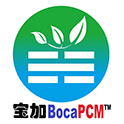A Feast for Energy Experts
THE GREEN SHOWCASE
Council House 2 Melbourne
City's Green Vision
CH2
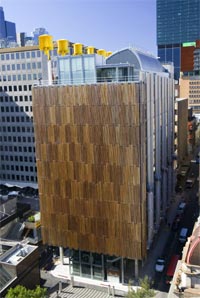
City Council House 2 Melbourne (CH2), proposed in the City Plan 2010 – towards a thriving and sustainable city’, is the City of Melbourne’s primary planning strategy in 2000. One of the 4 strategic directions in it is to make Melbourne an Environmentally Responsible City (ERC).
As a part of the Council policy, as outlined in Council’s Cities for Climate ProtectionTM commitments, the construction of the CH2 becomes the experimental field in which various kinds of new environmental friendly technology were employed and examined. The main driver of CH2’s energy efficiency measures is to reduce the greenhouse impact of building.
This will be achieved through leading edge building design, greening energy supplies and offsetting emissions through the establishment of carbon sinks.
For this development, Phase Change Materials (PCM) E15 were used as the main supply of thermal energy to the chilled panel/beams. The course of and the success of this project had thus examined, developed and finally acknowledged the engineering feasibility of Phase Change Materials, already widely known in the green industry, as an innovative, efficient and reliable measures for green purposes.
A Shower Tower to solidify PCM

The building proposal includes a shower tower. This cooling mechanism provides cooling and ventilation via a shower of water adjacent to the building. The shower water will be at a cool temperature, especially at night as it will follow the wet bulb temperature of the air. The shower tower will operate in conjunction with cooling towers to ensure optimal operation.
Thus, if taking a typical summer’s day to be a worst case scenario, it is assumed that the water flowing through the shower-tower overnight will be at 12 degrees. This is due to the fact that the wet bulb temperature in Melbourne is rarely greater than 12 degrees at night. This cool water can be used to solidify an appropriately manufactured Phase Change Material.
During the heat of the day, the chilled beams require water at 16 degrees. The Phase Change Material can cool this water and can do so for sustained periods given the high latent heat required to melt the Phase Change Material before its temperature can rise further.
Chilled Ceiling Panels
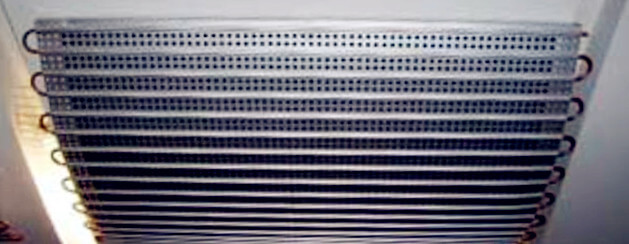
In the most passive mode, the chilled water to the ceiling panels is supplied by three large tanks in the basement. Each of the tanks contains nearly 10,000 small stainless steel balls filled with a form of phase change material (PCM), a salt suspension which freezes at 16°C.
The water in the tanks is chilled by the frozen PCM and then pumped around the building to the chilled ceiling panels when cooling is required. The water that returns from this circulation is usually about two to three degrees warmer. Heat from the water is transferred to the PCM balls re-chilling the water. The PCM balls continue to absorb heat until they melt.
By this process, the PCM acts as a thermal storage battery. When the PCM can no longer absorb heat, the PCM system is shut down and the chillers on the roof are used to chill the water required to run the cooling system. This occurs more frequently in summer.
As with the night purge process, the heat contained in the water is dissipated through the cooling towers on the roof at night through a trickle evaporative cooling process. Cool water is then brought back down to the basement.
In winter, when the night air is very cool, the water that returns to the basement is cold enough to re-freeze the PCM balls without the need for chillers. In warmer months the chillers (in the rooftop plant room) provide chilled water to the basement to freeze the PCM balls.
Read more on the PCM energy saving measures at CH2: https://www.melbourne.vic.gov.au/building-and-development/sustainable-building/council-house-2/conserving-energy-water/pages/heating-cooling-systems.aspx
Night.
Charging mode. The shower tower water solidifies the PCM for use the next day.
Day.
Cooling mode. Water to the chilled beams is cooled by the freezed PCMs.
Charging for the PCM will occur during the night time. The lower ambient temperatures at night will enable “free cooling” during certain times of the year. “Free cooling” refers to heat rejection without operating a chiller, i.e. by utilizing cooling towers or shower towers.
PCM Container: From Plastics to Metal
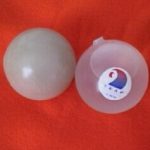
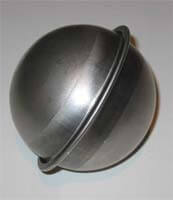
Originally the spere container for PCM is made of plastics. However, corrosion can occur between the Phase Change Material and the plastic spheres, thereby contaminating the water and leading to corrosion of the rest of the system. At last, stainless steel spheres which are corrosion resistant and have greater thermal efficiency are used.
Tank Design
The building is equipped with three thermal energy storage tanks in the basement. Each tank has a design volume of 10 sqm, filled with a total of 31,500 nos. of PCM Ball. These balls contained PCM solution capable of being frozen at 15°C, providing a 1,000kWh thermal energy storage capacity.
